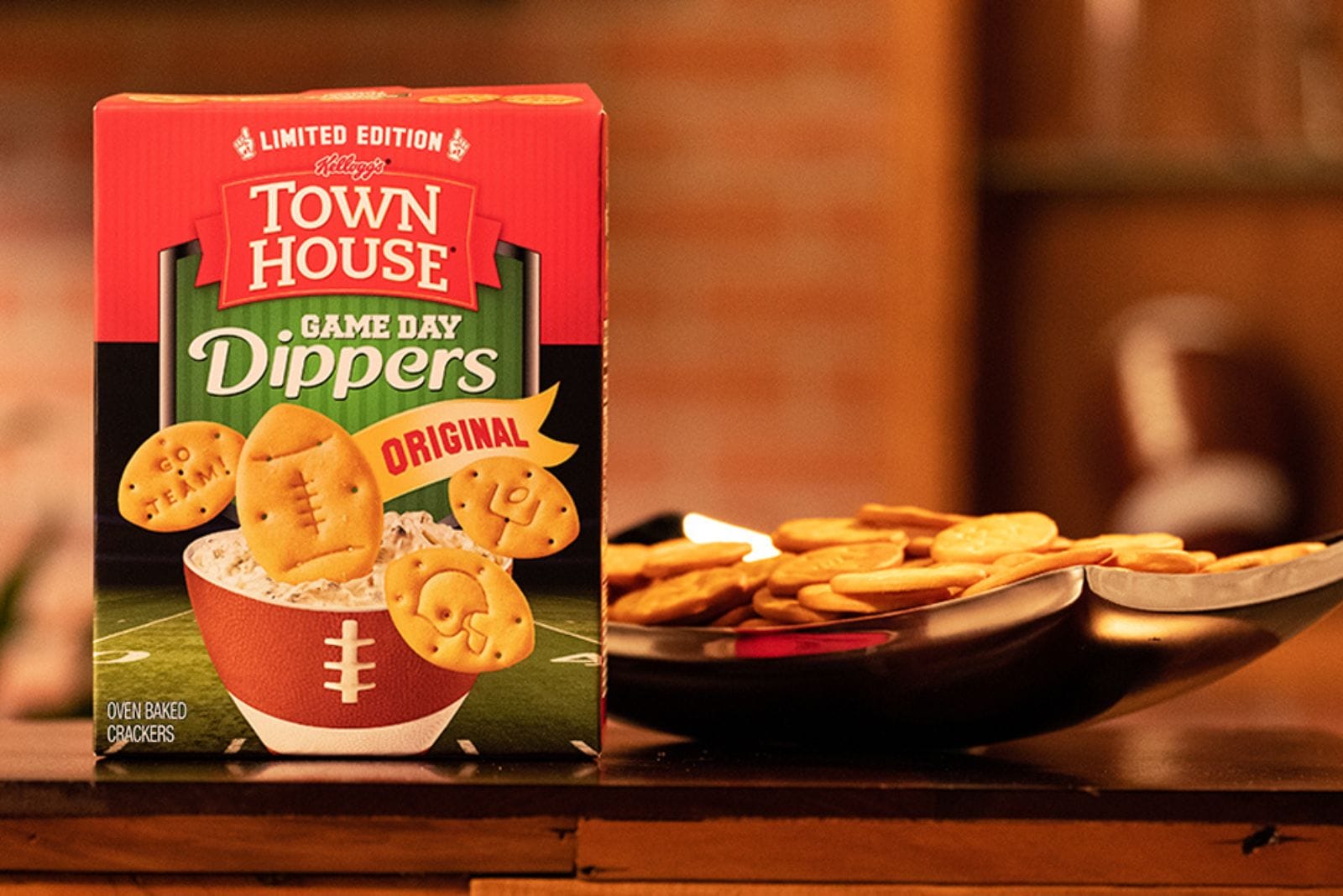KANSAS CITY, MO — Trends are pointing to consumers seeking out comforting treats as a coping mechanism during the pandemic. The Summer Fancy Food Show saw those same comfort-food trends. However, many now come with an updated twist that balances nostalgic favorites with something new, according to one Dawn Foods report. These days, “something new” often means functional benefits.
“Consumers’ pursuit of comforting foods with a slight twist in flavor, ingredients and nutritional benefits will drive the majority growth of the $170.4 billion specialty food industry in 2022,” according to the Specialty Food Association’s Trendspotter Panel.
For example, Unbelievabuns’ hamburger buns made with antioxidant-packed and fiber-rich sunflower flour, and pancake and waffle mix made with Amasar’s protein and vitamin-loaded breadfruit flour were just two of the standout products at the show.
Identifying a yearning for a return to classic flavors, woman-owned company Soozy’s Grain-Free recently launched Birthday Cake Donuts. The gluten-free donuts are sweetened with organic coconut sugar and maple syrup, free of refined sugar, processed ingredients and artificial colors.
Many consumers will be more willing to try new flavors if they are presented in a familiar way. And that’s not exclusive to functional foods; it’s a popular way for any consumer to expand their culinary palate, regardless of their dietary preferences.
For example, many Asian ingredients and flavors are not yet a part of mainstream consumer culture outside of traditional Chinese cuisine. This presents a great opportunity for Asian fusion concepts — merging familiar flavors with foreign ones —or introducing new flavors within a familiar format. One such brand, Yishi Foods, introduced a variety of Asian-inspired oatmeal flavors with functional benefits to the breakfast aisle, finding success in flavors like Red Bean Berry Oatmeal and Taro Bubble Tea Oatmeal. As consumers experience new flavor sensations, the oatmeal base lends a blanket of comfort.
People crave adventure by way of flavor after years of being deprived of the ability to travel globally during the pandemic. However, consumers are no longer demanding flavors from the well-known cuisine. Some of the fastest-growing flavor concepts in the US are Asian and South American, including inspiration from India, Korea, Argentina, Vietnam and Brazil, according to Datassential’s Fastest-Growing Restaurant Concepts report.
Younger consumers show the most interest in these emerging cuisines. The latest Dawn Foods report suggests that as this generation matures — and gains spending power — brands should focus on infusing international and regional flavors into snack foods to differentiate and convey authenticity.
“I’m noticing more differentiation between southern and northern Indian cuisine and the specific spices used,” said Monica Saxena, owner and manager of aRoqa, a popular Indian restaurant in New York City. “It’s great to see people recognizing the regional varieties that I enjoyed while growing up.”
Spices used in international fare are becoming more mainstream as well. Mintel’s Trending on US Menus: Baked Goods report revealed that many consumers are taking notice of international spices that offer a dynamic, rich flavor profile.
Dallas-based potato chip brand Green Sahara introduced consumers to international spices by offering a range of salty snacks seasoned with African spice blends, differentiating between East African barbeque chili and the savory spices of North Africa.
In its 2022 Flavor Flash report, T. Hasegawa identified Mediterranean and Middle Eastern flavors as particularly popular with products like shawarma, harissa, peri-peri and za’atar gaining popularity over the past year. Maine Crisp also plans to release a new Olive & Za’atar Spiced Crisp soon.
Fruit flavors from Asia and Latin America are also becoming increasingly popular in desserts and confections. One Mintel study reports that lychee, yuzu, dragon fruit and ube — common in Asian cuisine — are poised for growth within the category.
Among these flavor trends, an underlying behavior persists: Consumers are increasingly shopping for baked goods that fall within the handcrafted, specialty and artisan categories. Despite the rising food costs brought on by inflation, people are still willing to pay a premium for artisan baked goods.
“The specialty, artisan food market has prospered amid two difficult years, with [the] latest research showing specialty continues to grow at a faster rate than all food.” — Denise Purcell |VP of content and education | Specialty Food Association
“The specialty, artisan food market has prospered amid two difficult years, with [the] latest research showing specialty continues to grow at a faster rate than all food,” said Denise Purcell, VP of content and education at SFA.
For bakery and snack brands, one question remains: How long will consumers maintain their baked goods buying habits? As inflation shows no signs of slowing, many consumers may think about choosing private-label products to keep costs down.
“With consumers being so sensitive to pricing, we have seen a shift to private-label products in grocery stores,” said Tim Grzebinski, clinical insights principal at IRI Worldwide. “But this has not yet happened in the baking aisle. One thing we know for sure is that people do not want to sacrifice quality.”
As inflation prices plague consumers, brands must seek out that balance between superior flavor and dollar value.
Supply chain disruption still impacts product availability, forcing many brands to prioritize their flavors or terminate those in lesser demand.
“When we look at bread and rolls, the assortment is down,” Grzebinski said. “The supply chain is impacting assortment and variety. Add inflation to that, and if there are lines that aren’t as profitable, brands are walking away from those products.”
Some of the most prominent supply chain barriers and inflation rate factors are the results of the war in Ukraine.
“Russia is a huge exporter of grain,” Grzebinski said. “Even if certain countries don’t source from there, it’s a demand on US supply and it has a huge impact on cost.”
According to the World Bank’s Food Security Update reported as of June 16, the Agricultural Price Index is 14% higher compared to January 2022. Additionally, maize and wheat prices were up by 27% and 37%, respectively, compared to January 2022.
Several countries are limiting sugar exports as well, representing one of the latest obstacles for the baking industry. India, the world’s second-largest sugar producer and top sugar consumer, recently announced it would be implementing a cap to maintain domestic availability and price stability, according to Business Insider.
Political threats, economic disruption and natural disasters have always posed great risk to the global supply chain, and the pandemic exposed those vulnerabilities. Robert Berg, founder of Iridescent Data and industry partner to Emerge CPG, mused on the potential benefits of a supply chain revolution where local markets become more important, transportation costs are reduced and larger retailers call on smaller brands for white-label products.
“We need to be able to rethink how the local space allows for that,” Berg said.
This is not to suggest that a supply chain system would benefit from entirely local and domestic sourcing but could better emphasize the benefits of supporting local food systems. Thriving local, decentralized supply chains decrease dependence on imports that are subject to global fluctuation; create greater food security; and promote seasonal, sustainable food procurement practices.
Sustainability within food is a major trend that’s captured consumers’ hearts. Holistically healthy consumption practices also consider planetary health, and a shift toward seasonal consumption methods is on the rise. Approximately 36% of consumers are motivated to purchase a sweet baked good based on seasonal flavors, according to T. Hasegawa’s Food Flavor Trends report.
As sustainability becomes more mainstream, the demand for seasonal ingredients will be sure to increase.
As sustainability becomes more mainstream, the demand for seasonal ingredients will be sure to increase. Stone fruit in the summer, squash in the fall, and rhubarb in the spring can serve as a source of new flavor inspiration. Could a return to sustainable supply chains and a renewed focus on long-ignored and neglected flavors offer new flavor innovation in this constantly changing world? Only time will tell. For now, the flavor trends currently emerging from these global disruptions are making waves in a positive way.
This story has been adapted from the August | Q3 2022 issue of Commercial Baking. Read the full story in the digital edition here.












